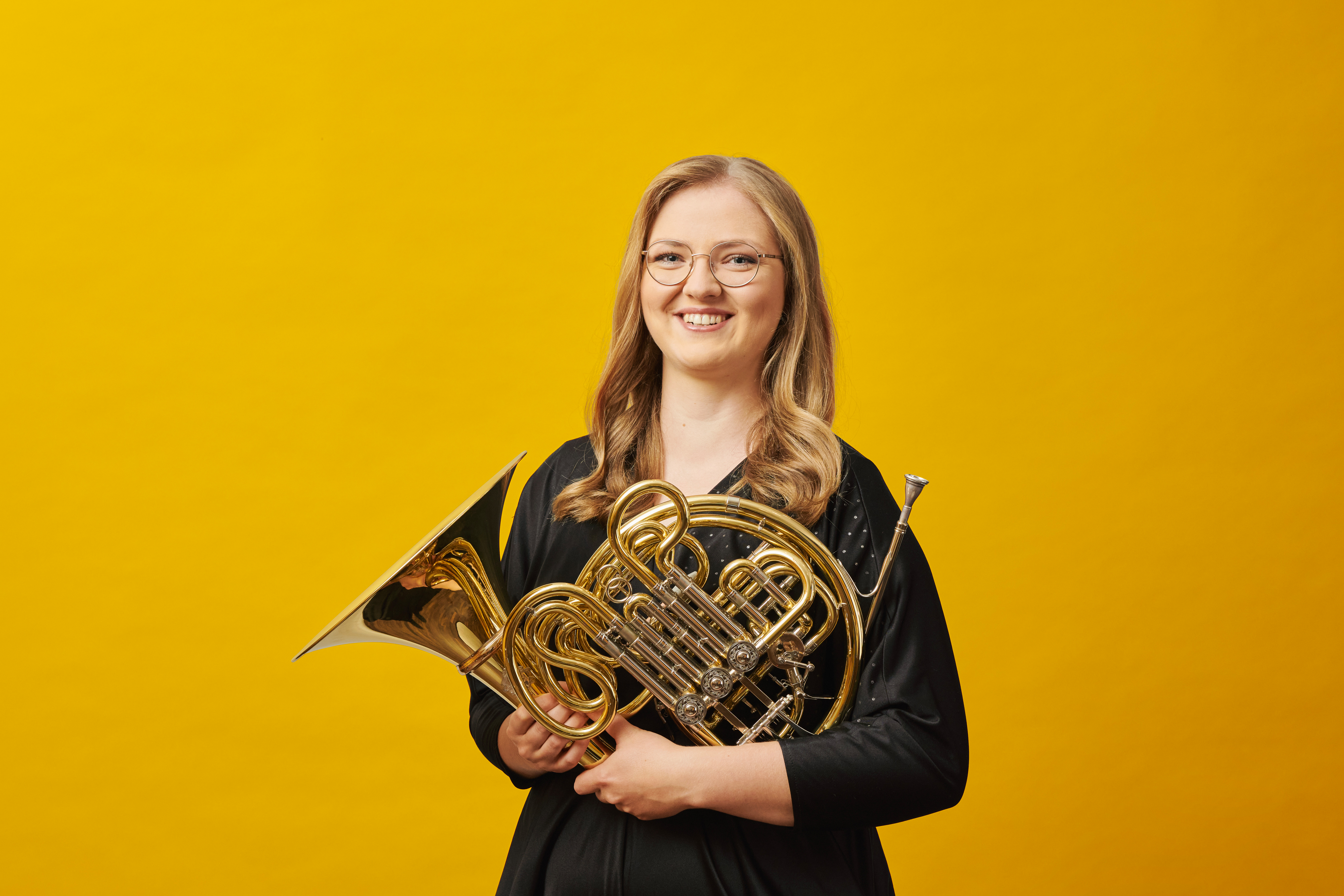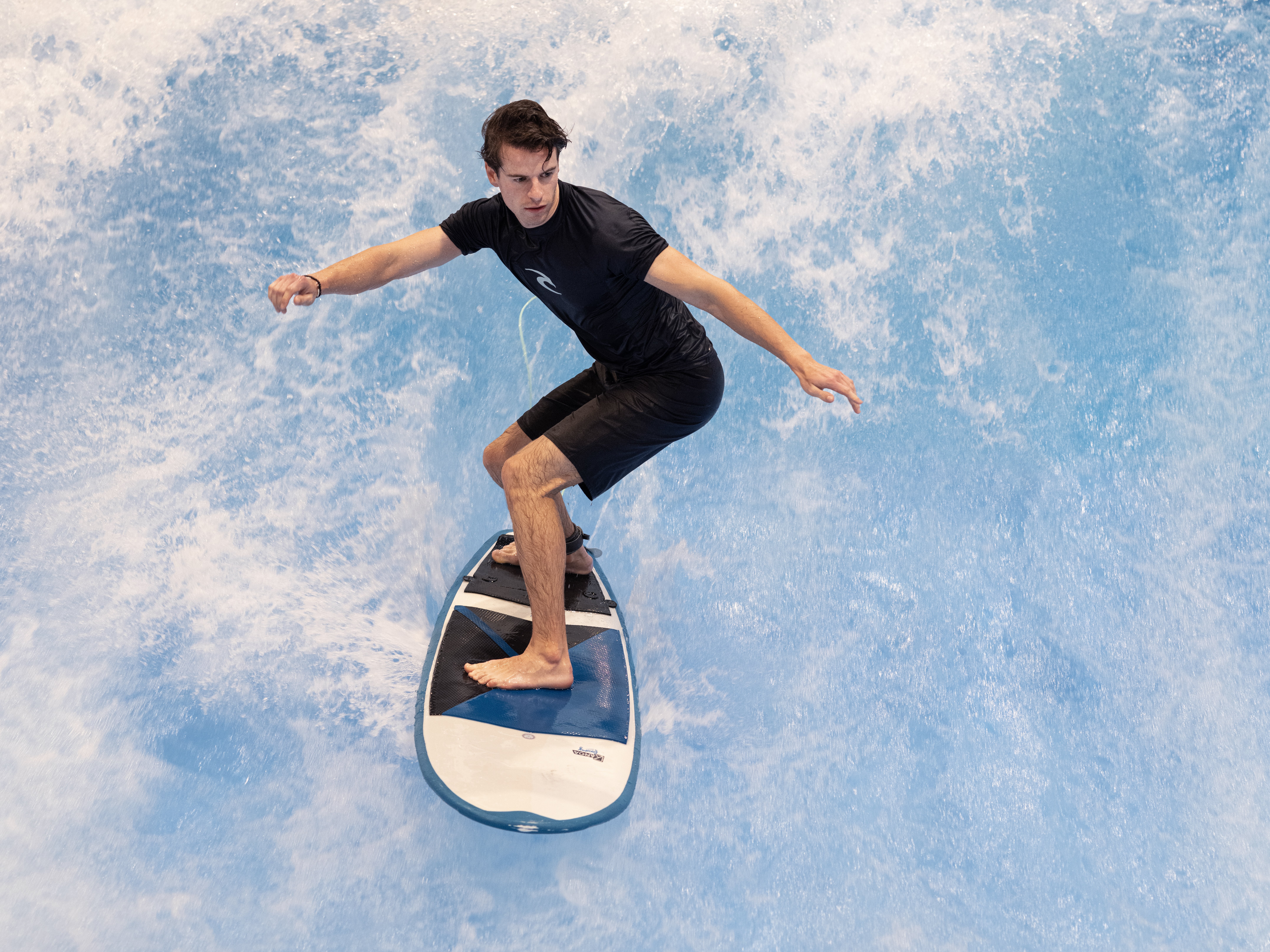- If I were not a musician ...

In this series we introduce our readers to members of the orchestra and their extra-musical passions. Today we meet horn-player Paula Ernesaks, who is a true team player.
Arnold Schoenberg did it, so did George Gershwin. Sergei Prokofiev and his colleague Benjamin Britten were also fans. Erik Satie set it to music and one of today’s living composers, Vito Žuraj, plays it as often as he can. What is it? Tennis! This sport – sometimes known in Germany as the “white sport” – has long fascinated people for its combination of elegance, endurance, strength and technique. The same is true of Paula Ernesaks, who has been a member of the horn section of the Berliner Philharmoniker since March 2022.
We meet in the Philharmonie canteen. Back-to-back rehearsals of Bruckner’s monumental Eighth Symphony under the direction of Andris Nelsons ended only a few minutes ago. This is a work that is especially demanding for the brass players. Paula Ernesaks quickly orders food before sitting down at one of the tables with me. “I’ve been playing tennis since I was nine,” she begins. “I’ve got three sisters, all of whom play tennis. I didn’t want to be left out.”
Paula Ernesaks was born in Helsinki twenty-eight years ago, and comes from a family of musicians. He mother plays the violin in the orchestra at the Finnish National Opera, while her father teaches the piano at the city’s Conservatory. Paula, too, began by playing the piano, but decided to switch to the horn, which she preferred because of its appearance and its sound. “I love the horn, because of its flexibility in terms of its timbre, and of course because of its different colours and its vast musical range,” she explains.“The horn can forge a link between the brass and woodwind instruments, but it can also support the strings. Sometimes the horns even have a tune to play. And whenever they do launch into a tune, it’s always a beautiful line that really does justice to the sound of the instrument.”
For Paula Ernesaks, who studied at the Espoo Music Institute and at the Sibelius Academy in Helsinki, tennis provides the perfect balance to her work in the orchestra. “Tennis demands extreme attentiveness at every stage of the game,” she says.“You have to learn to focus on each point. That's also true for horn players. Good tennis players and good horn players need to have good nerves. There’s no room for self-doubt.” Another thing that she likes about tennis is that it is a very physical sport. “Tennis places demands on your whole body,” she explains. “A game of tennis is like an intense workout. You have to keep running and you need a lot of strength and excellent coordination.”
Tennis took off in Germany in the late 1970s, when club membership passed the one-million mark. Since then the ranks of the Berliner Philharmoniker have been swelled by many musicians who also play tennis. When the players are away on tour, Paula Ernesaks always arranges a match with her colleagues. “I’m a team player,” she says. “Playing doubles is huge fun.”
Paula Ernesaks would like to join a club in Berlin and play tennis on a more regular basis. She occasionally goes to a fitness centre or meets friends for a game of badminton. This, she jokes, is just a simpler version of tennis. Would sport ever have been a professional alternative to music? Paula Ernesaks shakes her head.“I’m in the wonderful position of having a hobby,” she says. “It’s one that I find fulfilling and rewarding. What more could you want?”

Paula Ernesaks
Profile of the horn player of the Berliner Philharmoniker

Bertold Stecher: If I were not a musician …
Trumpeter Bertold Stecher likes to create symphonies of colours.

Vincent Vogel: If I were not a musician …
Percussionist Vincent Vogel loves catching the waves.